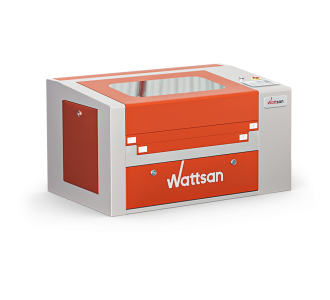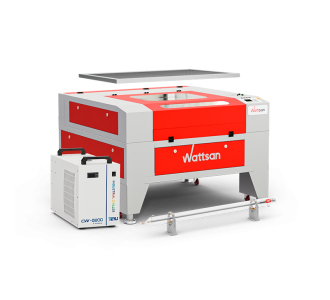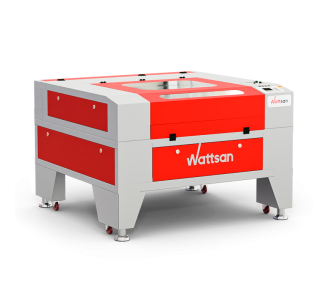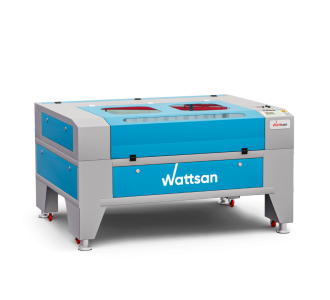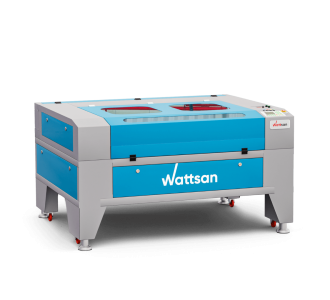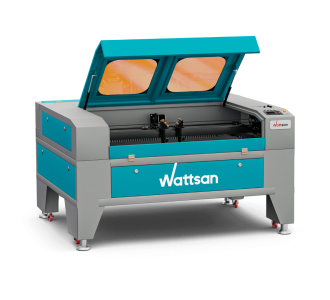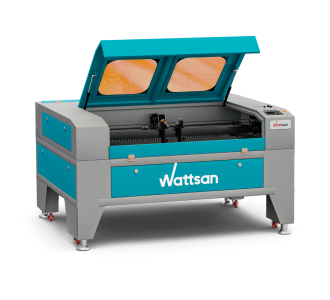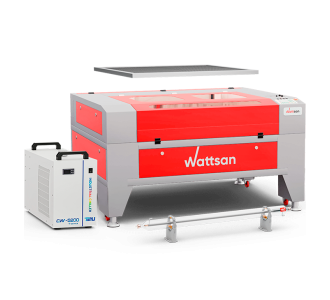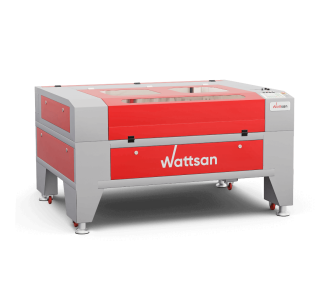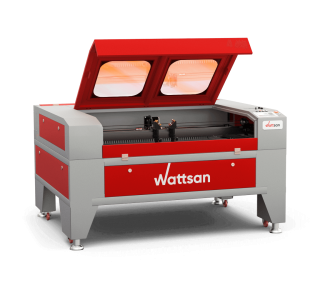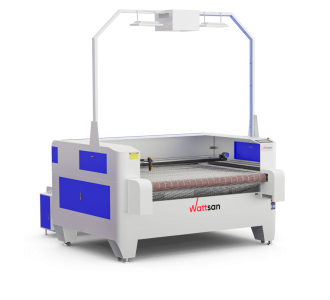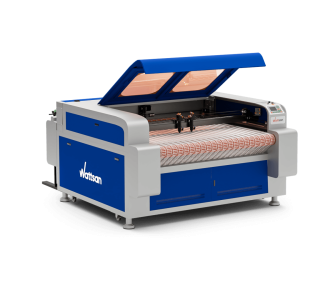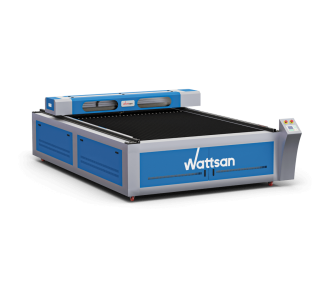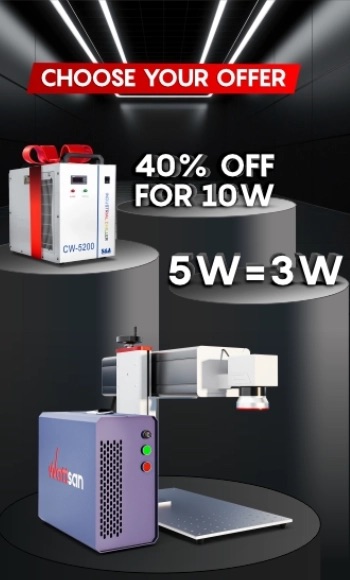Laser equipment for processing fabric
On the Virmer website, you will find a wide selection of laser equipment for processing fabric. This type of equipment is intended for cutting and engraving on fur, textile, and leather. Before the advent of laser equipment, clothing companies processed textile manually using scissors and special knives. Automated equipment allows you to increase production volume and performance. With our machines, you can always be sure that your products are of high quality and will pay off quickly. Moreover, Virmer provides full warranty services and starting-up and adjustment works for its clients.
What fabrics are suitable for laser treatment?
Laser equipment can process virtually any type of fabric. The automatic feeding of roll material allows speeding up the production process as much as possible. Laser machines provide clean and accurate cuts with perfect edges regardless of material thickness. Here is the list of materials that lend themselves best to laser processing.
- Silk. The most complex patterns can be performed on this material. When working with silk, you should choose the minimal power setting since the material is prone to tearing.
- Cotton. Natural material is quite easy to process on laser equipment. However, you should pay attention to the level of power of your equipment. If it is too high, the edges of cotton fabric can take on a yellowish tint.
- Leather. An excellent kind of material for both cutting and engraving. Due to its hardness, leather is very difficult to damage. Therefore, it can be machined at high power.
- Polyester. The material has a similar thickness to cotton, but when processing it, you can ignore its edges. Polyester does not need any post-treatment because the laser seals the edges of the fabric.
High precision of laser machines allows transferring complex patterns to material and performing engraving without risk of damaging fabric.
Operating principles and types of fabric treatment
The main tool for fabric processing is a laser beam. Depending on the machine’s type and settings, treatment can be carried out in three ways:
- Burning the material;
- Melting particles;
- Dye-sublimation printing.
Laser treatment of textile is performed by burning due to the high intensity of the laser beam. When the power is not so high, particles of the material evaporate, but if the power is increased, the fabric is cut through. Because of the vaporizing process, edges of the material are even and sealed. Some types of fabrics become yellowish at the cutting area, and additional treatment is required.
Fabric engraving is possible due to limitations in power of the laser beam. This type of treatment is performed in depth. In other words, the beam evaporates the surface layer of the material according to the pattern shape. The rest remains unaffected.
Another type of laser treatment is marking. Under the influence of the laser beam, the material changes its color, but the surface of the material does not evaporate. Using this method, it is possible to apply patterns to the fabric by changing its color.
What can be produced?
Laser machines for fabric can be used to produce virtually any type of textile goods. As mentioned above, fabric can be cut, engraved, or marked. These are some examples of items that can be made with laser equipment.
- Leather goods (clothing, bracelets, straps, bags, etc.);
- Decorative elements;
- Clothing;
- Furniture and car covers;
- Window blinds and so on.
Laser equipment offers incredible possibilities for processing fabric that normally are time-consuming to be performed manually. Automated machines allow you to carry out large volumes of cutting, engraving, marking, and embroidering in the shortest possible time.
How to select laser equipment?
When choosing a laser machine for fabric, you should take into account the production volume and the type of fabric. Here are some important technical criteria that affect the machine’s productivity.
Work area
Laser machines for fabric processing are characterized by a wide choice of work area sizes, from 200x200 mm to 2000x3000 mm. We recommend choosing equipment with the work area that is larger than workpieces to be machined. However, it is worth noting that the larger the work area is, the more expensive the machine is.
For manufacturing small items, we offer to consider the Wattsan 0203 micro. It is reliable equipment with the work area of 200x300 mm and the 40 W laser tube. It allows engraving and cutting fabric up to 5 mm. The machining speed is up to 300 mm/sec.
If you are looking for a machine for mass production, then you could look at the Wattsan 2030 Flat Bed. This machine comes with the working area of 2x3 meters and the 95 W laser tube. The equipment provides high precision with position accuracy of 0.03 mm at maximum speed. It is a perfect choice for serial production and processing large workpieces.
Laser tube power
It should be noted that for fabric processing, high power laser machines are not required. Regardless of the fabric thickness, the most optimal choice is the machine with power of 40-60 W.
If your production is based on machining different types of material including fabric, then we recommend opting for machines with more powerful laser tubes.
Important: the equipment, offered by the Virmer Company, can be easily modified and upgraded. Almost any machine can be equipped with a more powerful tube.
Additional features
In addition to the main selection criteria, our company recommends paying attention to some additional features.
Automated feeding of roll material. Such a mechanism is not required for small-scale production. While for mass production, it is indispensable. This option allows avoiding the monotonous process of replacing laps and pre-cutting material.
It is worth noting that not all machines are equipped with an automated feeding option. If this function is required for your tasks, then we offer to look at the Wattsan 1610 Cam Conveyer CO2 laser machine. This model is equipped with a conveyer table (1600x100 mm), a 120 W laser tube, and a built-in scanning camera. This medium-format machine is suitable for processing fabric, plywood, acrylic, and other non-metallic materials.
Exhaust system. One of the main advantages of laser treatment is the absence of production wastes. However, to process some types of material, for example fur, we recommend choosing equipment with a powerful exhaust system. The reason lies in the odor emitting when machining these materials. And a standard exhaust system cannot handle it.
In conclusion, let us note such an important selection criterion as manufacturer’s reliability. Some clients choose low-cost equipment. However, it is important to remember that reliable manufacturers do not only sell machines, but also provide warranty, commissioning assistance, and further service. With Virmer, you can be sure of your choice. Our customers get a full warranty, post-warranty service, and equipment repairs. Moreover, we are always happy to help you with choosing the best option and answer all your questions.
